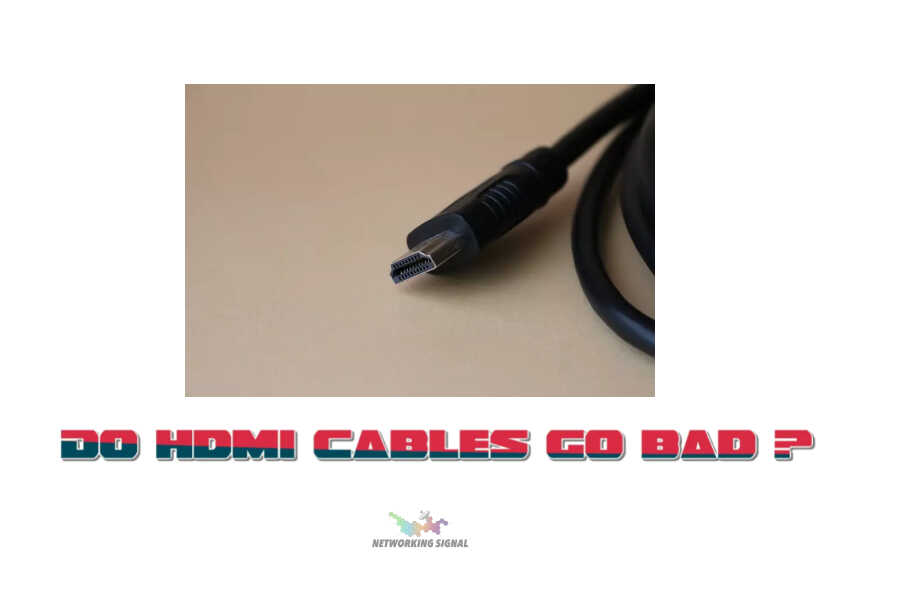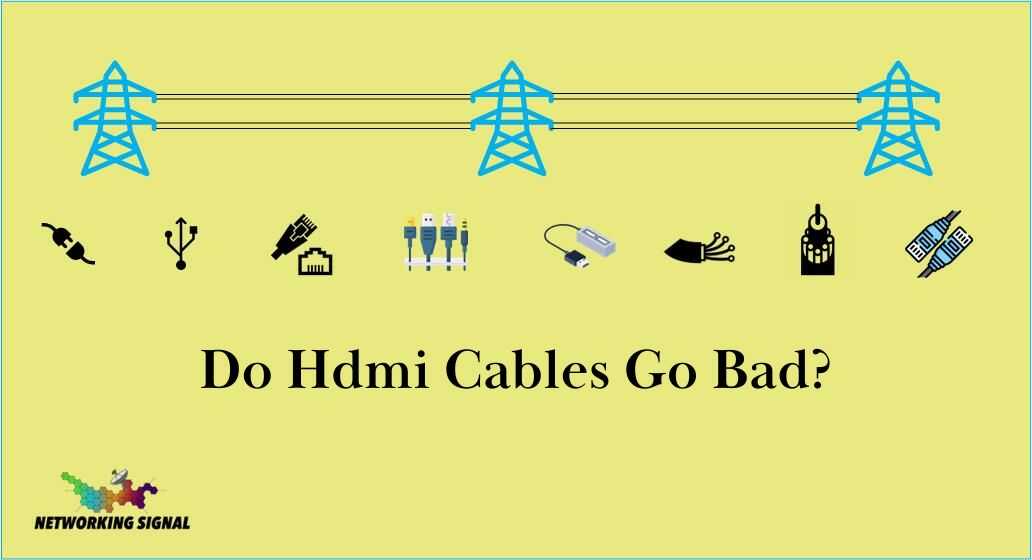HDMI (High-Definition Multimedia Interface) cables have become a staple in modern home entertainment systems and are widely used to connect various devices, such as TVs, gaming consoles, and streaming devices, to deliver high-quality audio and video signals.
However, like any other technology, HDMI cables can experience issues over time.
In this article, we will explore the question, “Do HDMI cables go bad?” and provide you with insights into their lifespan, signs of deterioration, and ways to extend their longevity.
Understanding HDMI Cables
HDMI cables are designed to transmit uncompressed digital audio and video signals between devices. They provide a seamless connection that ensures high-quality audiovisual output.
HDMI cables come in various versions, with each new version offering improved capabilities such as higher resolutions and increased bandwidth.
Look Here:
Factors That Affect HDMI Cable Performance
Several factors can affect the performance of HDMI cables, potentially leading to issues or degradation of signal quality.
Cable Quality
The quality of an HDMI cable plays a crucial role in its performance and longevity. Higher-quality cables generally have better shielding and connectors, which minimize signal interference and ensure reliable transmission. Investing in a well-constructed, certified HDMI cable is recommended for optimal performance.
Length of the Cable
The length of the HDMI cable can impact signal quality. Longer cables introduce more resistance and signal attenuation, which can result in a loss of video or audio quality. It is essential to choose the appropriate cable length for your setup to avoid potential issues.
Environmental Factors
Environmental factors, such as extreme temperatures or exposure to moisture, can affect the lifespan of HDMI cables. High temperatures may cause the cable’s insulation to degrade, while moisture can lead to corrosion of the connectors. Keeping HDMI cables away from direct sunlight and ensuring a dry environment can help prolong their lifespan.
Signs of a Bad HDMI Cable
Identifying the signs of a bad HDMI cable is crucial for troubleshooting and ensuring optimal performance in your audiovisual setup. Here are some common indicators that your HDMI cable might be experiencing issues:
Flickering or No Picture
If you notice flickering on the screen or no picture at all when using an HDMI cable, it could be a sign of a faulty cable. This can occur due to damaged internal wires or poor connectivity.
Poor Audio Quality
Another potential sign of a bad HDMI cable is poor audio quality. You may experience audio dropouts, distortion, or low volume levels when the cable is not functioning correctly.
Intermittent Connectivity
Intermittent connectivity, where the audio or video signal cuts in and out, is a clear indication of a problematic HDMI cable. It could be caused by loose connectors or damaged wires within the cable.
Reasons Why HDMI Cables May Go Bad

While HDMI cables are generally reliable, several reasons can contribute to their deterioration or failure.
Physical Damage
Physical damage, such as bending, kinking, or crushing the cable, can weaken its internal components and lead to signal degradation. It is essential to handle HDMI cables with care and avoid excessive strain on the connectors.
Wear and Tear
Over time, HDMI cables may experience wear and tear due to frequent plugging and unplugging or movement of connected devices. The repeated stress on the cable and connectors can cause them to wear out, resulting in a decline in performance.
Manufacturing Defects
In some cases, HDMI cables may have manufacturing defects that affect their performance. These defects can range from poor soldering joints to subpar cable construction. Defective cables are more likely to fail prematurely.
How to Extend the Lifespan of HDMI Cables
While HDMI cables will eventually degrade over time, there are steps you can take to maximize their lifespan and maintain optimal performance:
Proper Cable Handling and Storage
Handle HDMI cables gently and avoid pulling or twisting them excessively. When not in use, store them in a cool, dry place away from potential hazards.
Avoiding Sharp Bends and Cable Stress
Ensure that HDMI cables are not sharply bent or subjected to unnecessary stress. Sharp bends can damage the internal wires and lead to signal loss or failure.
Regularly Checking and Cleaning the Connectors
Periodically inspect the connectors for any signs of dirt, dust, or corrosion. Clean them using a soft cloth or compressed air to maintain good contact and prevent signal issues.
Myth: Expensive HDMI Cables Are Better
There is a common misconception that expensive HDMI cables offer superior performance. However, this is not necessarily true.
HDMI cables that meet the required specifications and standards will provide the same audiovisual quality as more expensive options.
It is essential to focus on the cable’s quality, certification, and compatibility rather than its price tag.
FAQs
Can a bad HDMI cable damage my devices?
While a bad HDMI cable is unlikely to cause direct damage to your devices, it can result in degraded performance or no signal transmission. It is recommended to replace faulty cables to ensure optimal audiovisual experience.
How often should HDMI cables be replaced?
HDMI cables do not have a specific expiration date. However, if you notice signs of deterioration or experience issues with signal quality, it may be time to consider replacing the cable.
Are there any differences between HDMI cable versions?
Each HDMI cable version offers specific features and capabilities, such as increased bandwidth or support for higher resolutions. It is important to choose a cable that meets your requirements and is compatible with your devices.
Can HDMI cables affect picture quality?
Yes, HDMI cables can affect picture quality if they are damaged or of low quality. A good-quality HDMI cable ensures reliable and stable transmission of high-definition video signals, resulting in better picture quality.
Is it worth investing in gold-plated HDMI cables?
Gold-plated HDMI cables do not provide any significant advantages over regular HDMI cables in terms of performance. The gold plating helps prevent corrosion and ensures better contact, but it does not affect the overall signal quality. Consider the cable’s construction and certification rather than the gold plating.
Conclusion
In conclusion, HDMI cables can go bad over time due to various factors such as physical damage, wear and tear, and manufacturing defects.
Signs of a bad HDMI cable include flickering or no picture, poor audio quality, and intermittent connectivity.
By handling HDMI cables properly, avoiding sharp bends, and regularly checking and cleaning the connectors, you can extend their lifespan.
Remember, expensive HDMI cables do not guarantee better performance -instead, prioritize quality, certification, and compatibility when selecting a cable for your audiovisual needs.

